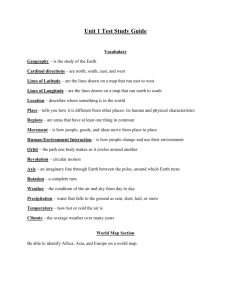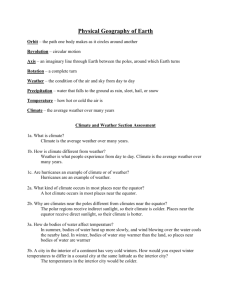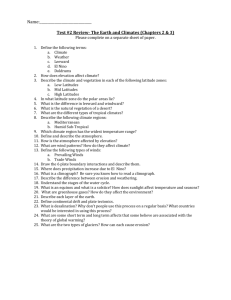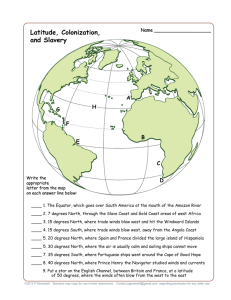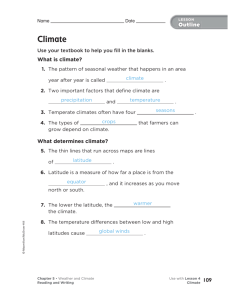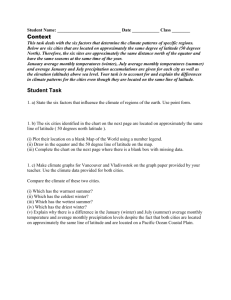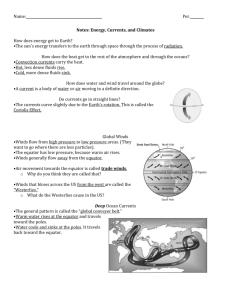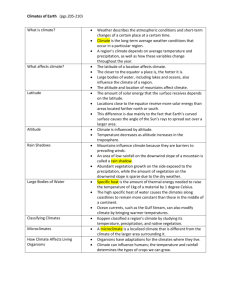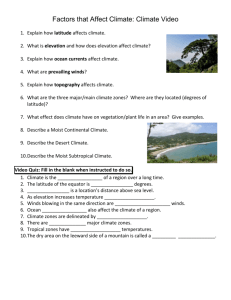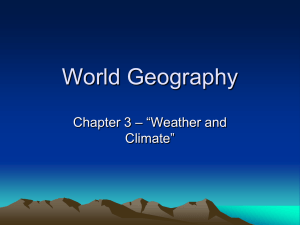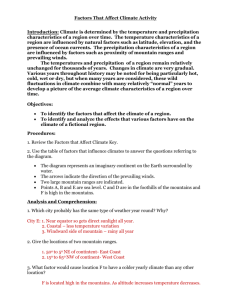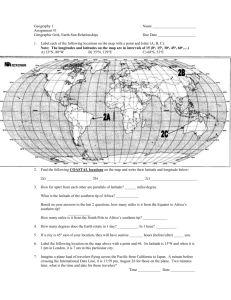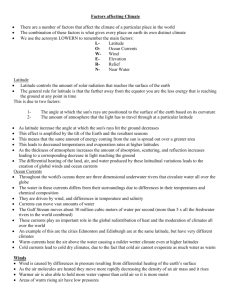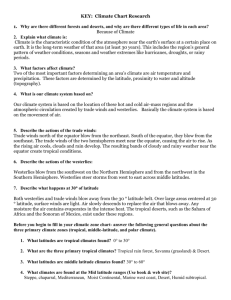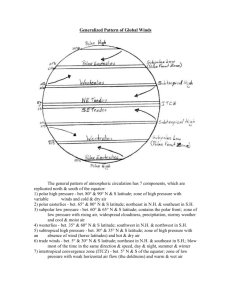Climate - AmazingClassroom.com
advertisement
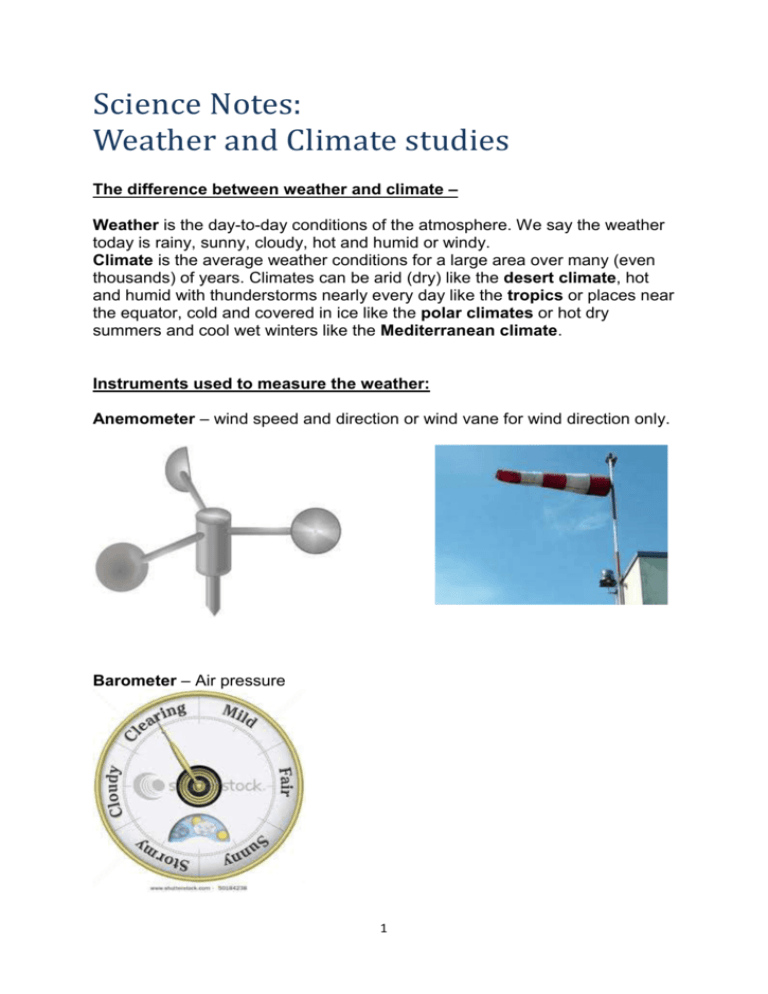
Science Notes: Weather and Climate studies The difference between weather and climate – Weather is the day-to-day conditions of the atmosphere. We say the weather today is rainy, sunny, cloudy, hot and humid or windy. Climate is the average weather conditions for a large area over many (even thousands) of years. Climates can be arid (dry) like the desert climate, hot and humid with thunderstorms nearly every day like the tropics or places near the equator, cold and covered in ice like the polar climates or hot dry summers and cool wet winters like the Mediterranean climate. Instruments used to measure the weather: Anemometer – wind speed and direction or wind vane for wind direction only. Barometer – Air pressure 1 Thermometer – Temperature in degrees Celsius (ᵒC) or Fahrenheit (F) Hygrometer – Humidity (the amount of moisture in the atmosphere) 2 Lines of Latitude We divide the world into 5 main lines of latitude (see diagram). These lines of latitude run across the globe. These lines are important as our climates are mostly (but not only) determined by our latitude. The further north or south we go from the equator the colder it gets. Make sure you can identify the main lines of latitude on a map for the quiz. Climate is not only determined by our latitude by also by other contributing factors such as: - - - Altitude – This is another word for height and simply means how high up we are. The higher we go, the colder it gets. Temperature drops by about one Degree Celsius for every 100m we go up. That is why high mountains always have snow-capped peaks even if the mountains are near the equator like Mount Kilimanjaro in Tanzania (Africa). See if you can find Tanzania on a map. Winds – Winds can bring different types of weather depending on where they come from. If wind comes from a cold area, it will bring colder weather. If winds come from hot, dry places that is exactly what type of weather it will bring. Every place has its own prevailing wind. That is the direction from which the wind usually blows. In the UAE the prevailing wind is from the North West and is called the Shamal. These cause heavy sandstorms that can last for up to 5 days. They come from Jordan and Syria where it is hot and dry. When winds blow over warm oceans, they pick up lots of moisture and bring rain. Oceans – Places near the sea are kept cool during the summer by ocean breezes. In the winter, places near the sea are usually warmer than inland areas. Places near the sea often get more rainfall than places inland. 3 How do seasons change? The changing of seasons from Winter to Spring to Summer to Autumn and back to Winter, has to do with the orbit of the earth around the sun. We know that the earth travels around the sun and takes around 365 days to complete one revolution. As the earth is tilted on its axis at 23.5 𝒅𝒆𝒈𝒓𝒆𝒆𝒔, different places get more direct sunlight at different times of the year. For example: In the summer months, the northern hemisphere is tilted towards the sun and gets more direct sunlight, whereas the southern hemisphere is tilted away from the sun and gets less direct sunlight. See the diagrams below for explanations. 4
